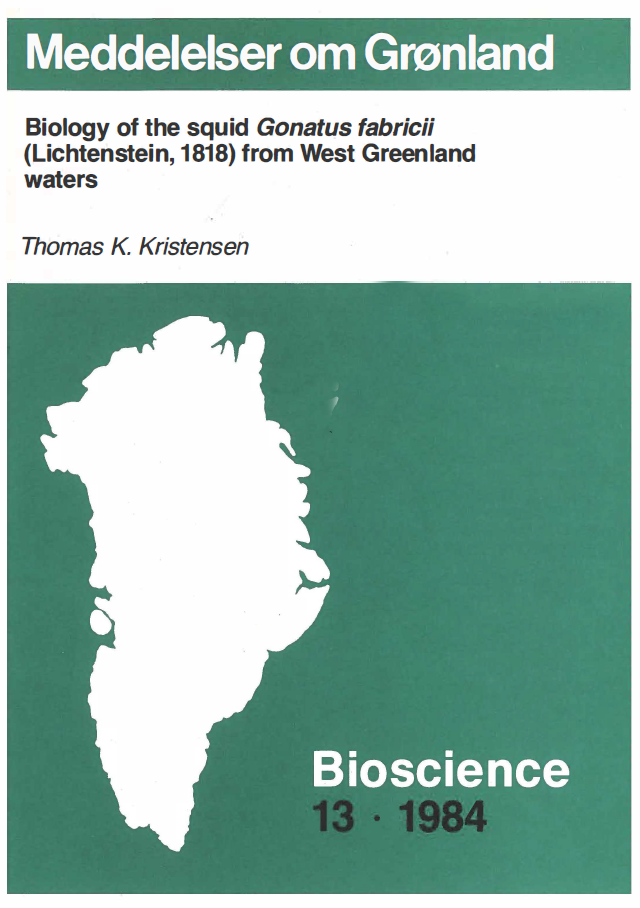Biology of the squid Gonatus fabricii (Lichtenstein, 1818) from West Greenland waters
DOI:
https://doi.org/10.7146/mogbiosci.v13.142331Abstract
Three hundred adult and subadult Gonatus fabricii and about 7000 juveniles from West Greenland waters were examined. In spring and early summer large numbers of juvenile G. fabricii hatch in Davis Strait. Their abundance fluctuates from year to year.
In Disko Bugt the juveniles hatch in autumn and early winter. Juvenile G. fabricii hatch over a large area in Davis Strait at depths exceeding 200 m. At night juveniles south of the polar circle perform vertical upward migrations. Likewise it seems that shoals of juveniles disperse at the same time. The number of juvenile G. fabricii is found to be about the same as the number of larvae of the Greenland halibut, Rheinhardtius hippoglossoides, a common commercial fish. The growth of G. fabricii was found to be 8-9 mm per month. The development of the gonads in relation to pen length is describable by the allometric equation. The testis begins to develop at a pen length of about 8-10 cm, the penis at a pen length of 3-5 cm. The largest mature male measured 29.3 cm pen length. The ovary begins to develop at a pen length of 6-8 cm.
No mature females were found. In Greenland waters males probably mature at about 20 cm pen length, females between 25 and 30 cm pen length.
51 % of specimens had empty stomachs, 27% were half full and 22% full. Crustaceans, fish and cephalopods were found in the stomachs and crustaceans were the most important. The protein percent was found to be 12.5 and in the liver the lipid percent was 63.
Spawning and predators of G. fabricii are also discussed.

Downloads
Published
Issue
Section
License
Coypyright by the authors and the Commision for Scientific Research in Greenland / Danish Polar Center/Museum Tusculanum Press as indicated in the individual volumes. No parts of the publications may be reproduced in any form without the written permission by the copyright owners.

